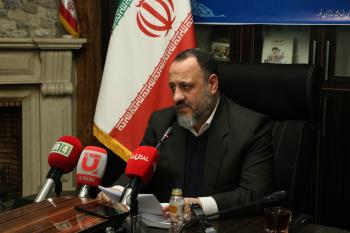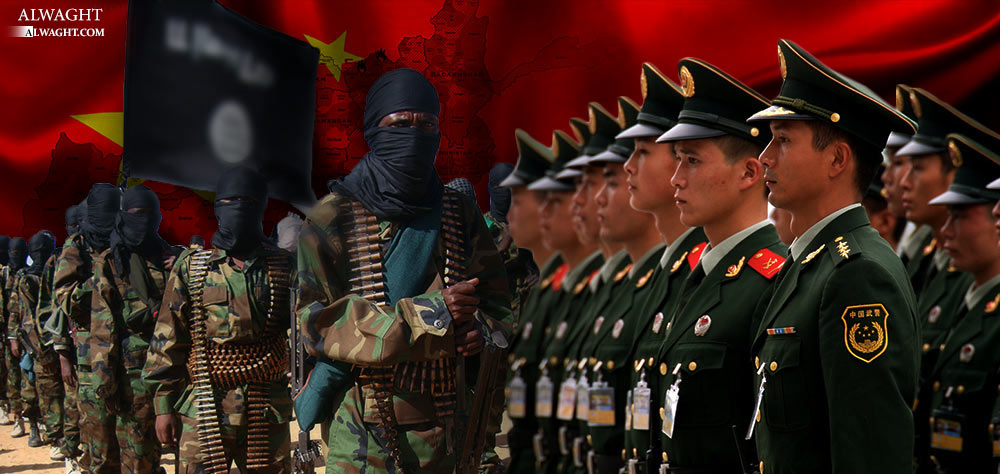Alwaght- Over the past few weeks, reports emerged about Beijing-Kabul negotiations and an agreement that will see China building a military base in Afghanistan’s remote northeastern province of Badakhshan. The AFP news agency, quoting the spokesman to the Afghan defense ministry Mohammad Radmanesh, reported that Chinese and Afghan officials debated constructing the base, but it said that the details of the deal are yet to be publicized.
In late December 2017, President of Afghanistan's Parliamentary Social and Public Affairs General of Defense Ministry Daulat Waziri had unveiled the deal. The issue, however, was immediately denied by the Beijing officials. The initial deal was reportedly struck during a visit to Beijing in December last year of an Afghan delegation led by the Minister of Defense Tariq Shah Bahrami. Media reports suggested that the two sides discussed joint counter-terror measures in the border areas. Similar discussions were conducted in summer 2016 during a security conference gathering the army chiefs of Tajikistan, China, Afghanistan, and Pakistan in the Chinese city of Urumqi, the capital of the Xinjiang autonomous region that borders Afghanistan. The four sides signed a memorandum of understanding on setting up a coalition and designing a quartet mechanism on fighting terrorism and radicalism.
Goals behind the deal
The most important motivation for China to construct the base in Afghanistan is to counter the increasing risks posed by the insurgents and terrorists in Badakhshan province, which borders Xinjiang. The autonomous region, home to the Uyghur Muslim minority, has a 22-million population. The region, sharing 5,600 kilometers of borders with Afghanistan, Tajikistan, Kyrgyzstan, Kazakhstan, Russia, Mongolia, and India, has susceptible parts in terms of security.
For years, the Uyghur separatist fighters have been taking shelter in Afghanistan and Pakistan. In an interview with the Arab News website, Amanullah Payman, a Badakhshan politician, has said that the Chinese concerns had clear reasons. “After all,” he continued, “the armed groups have under control nearly 50 percent of Badakhshan territory.”
When the Taliban were ruling Afghanistan, a large number of the Chinese Uighurs, who had received military training in al-Qaeda terrorist group’s camps, made their way to the foreign militias. Sources experts suggest that Beijing intends to build the base in the contact region between Xinjiang and Badakhshan, an impassibly mountainous area called Wakhan. For long years, the area, from north stretching to Tajikistan and from south to Pakistan, has been out of the reach of the central Afghan government due to tough weather conditions like heavy snowfalls. Wakhan is so hard to access that, reportedly, many of its residents have no idea who is their president or the US invaded their country in 2001.
The Chinese government is worried that the ISIS terrorists, fleeing from Iraq and Syria, could penetrate into Chinese territories through Wakhan, or Central Asia and Xingjiang seek new safe haven in Afghanistan. Some Uyghurs in past four years have fought for ISIS in the region’s hot spots Syria and Iraq. China also grows serious concerns about Eastern Turkistan Islamic Movement (ETIM), blacklisted as a terrorist group by Beijing, which could send saboteurs for operations in China through the Afghan enclave.
Now that ISIS is defeated in Syria and Iraq, the two countries in which it originally rose in 2014, possible new shelters for the terrorist group are believed to be Central Asia and Afghanistan. Since past months, Afghanistan came under deadly attacks claimed by militants affiliated with ISIS. On the other side, the evidence is increasingly laying bare the fact that the US is having the back of ISIS in Afghanistan, an arrangement helping Washington, on the one hand, justify its long-term Afghanistan military presence and, on the other hand, providing it with instruments to put strains on Russia and China as its archrivals.
Meanwhile, China is putting a premium on strong economic presence in Central Asia. For the Beijing leaders, enhanced stability of Central Asia works in their country’s best interests. They are aware that in chaotic regional conditions, the Chinese companies will lose chances of access to the Afghan mineral resources, whose value is estimated to be $3 trillion.
The new American national security doctrine, which finds China the toughest rival and a challenger of the US global hegemony and power, has even sped up the already-streaming Chinese efforts to build up its cross-border military presence. In August last year, China formally opened its first overseas military base in Djibouti, where the Chinese army’s personnel were deployed to operate the site. As it might appear, President Xi Jinping of China is struggling to rise with China as a regional and global power economically and geopolitically.
In late December 2015, Chinese parliament passed the nation’s new anti-terror law, opening the door for the government to send forces to neighboring states to help battle terrorism in case it poses national security risks to China.



























